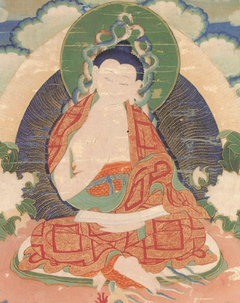Middle Way Series
Buddhist Philosophy › Middle Way
English (12) | Français (2) | Português (3) | བོད་ཡིག (10)

Nāgārjuna
Courtesy of Himalayan Art Resources
The precious view of śūnyatā,
May it be realized by those who have not realized it;
May it never decline where it has been realized;
May it go on increasing, further and further!
The following texts are available as part of our series on the Middle Way (Madhyamaka/Mādhyamika; dbu ma) philosophy:
General
- The Words of Chandra: The Definitive Secret of the Great Middle Way of Consequence Beyond Extremes, the Fundamental Intent of All the Tathāgatas by Jamyang Khyentse Chökyi Lodrö
- The Seed of Reasoning: Notes on the Five Great Logical Arguments of the Middle Way by Jamyang Khyentse Wangpo
- A Step-by-Step Meditation on the Definitive Meaning of the Great Middle Way by Khenpo Petse Rinpoche